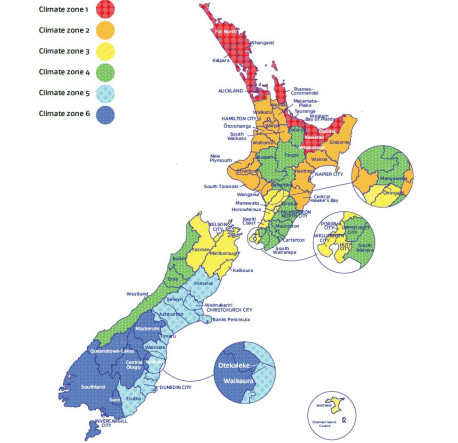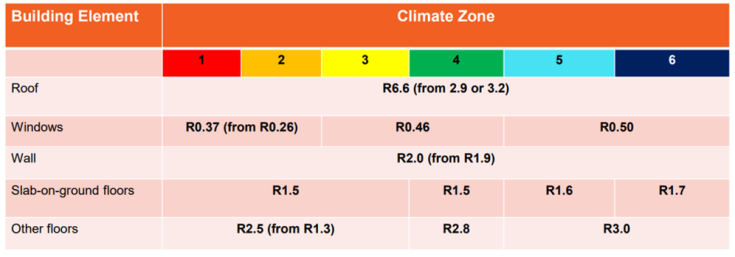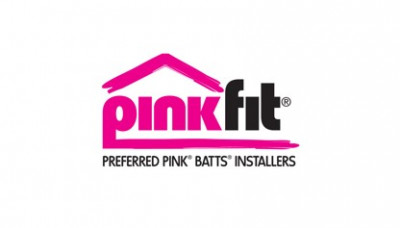There is no one-size-fits-all solution for the new H1 building code changes. You choose the method to calculate compliance and the products to use.
There are three methods for Building Code compliance:
- The Schedule method is the simplest – you meet or exceed the minimum construction R-values in H1 for the ceilings, walls, windows and floors. The limitation on this compliance pathway is that you cannot exceed 30% glazing.
- Calculation and Modelling methods give more flexibility including a larger percentage of glazing than the schedule method. The ceiling thermal performance can be balanced against the windows, walls and floor performance to allow for different solutions. The calculation and modelling methods also take into consideration energy usage in a more holistic manner.
Walls and ceilings
Ceiling construction R-values have increased significantly from R2.9 or R3.2 to R6.6 across all six new climate zones. Specifiers have choices:
- Simply meet the new R-values via the Schedule method – we have developed single- and double-layer solutions for this.
- Use a Calculation or Modelling approach – you could use a single layer solution of a lower construction R-value (at least R3.3) for the ceilings and increase thermal performance in other areas of the building such as walls and windows. Comfortech® have partnered with Speckel to help specifiers find the best pathway to meet the new H1 requirements.
Walls have changed little, but we expect a move to R2.6 or R2.8 wall batts to offset the high thermal bridging highlighted in a 2020 BRANZ Beacon Pathway report. This study found new timber-framed walls have on average 34% framing (and up to 55%), well above the 12 to 18% assumed in the Building Code.







